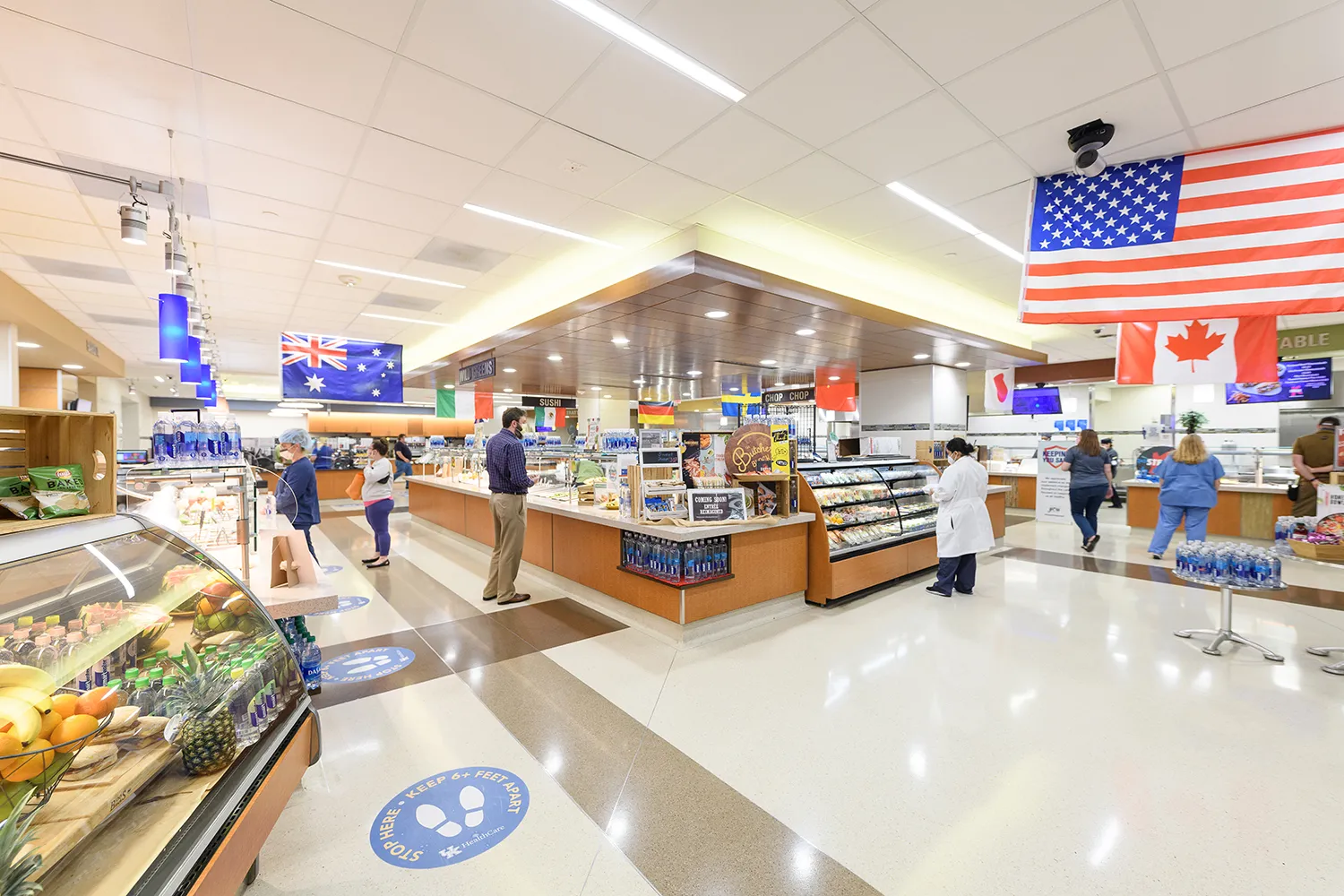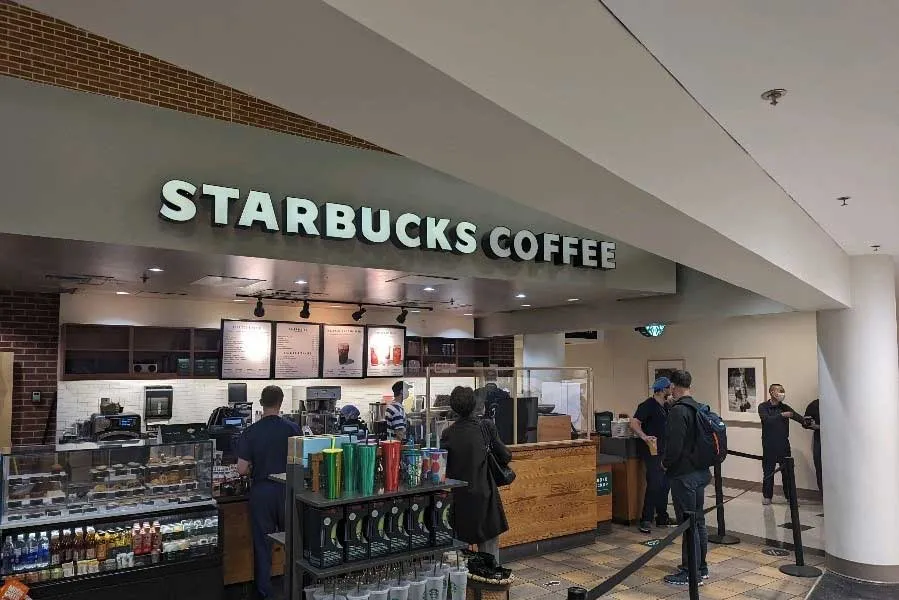Virtual Tour
Albert B. Chandler Hospital
The University of Kentucky medical center serves Lexington and the surrounding areas of central and eastern Kentucky, capturing the care of much of the Commonwealth. The Albert B Chandler hospital opened initially in 1962, and more recently underwent a massive renovation and expansion project that was completed in 2010 with the opening of the new “Pav A” tower.
The clinical facilities at the University of Kentucky support one of the largest transfer centers in the country, drawing in more than 19,000 inpatient hospital transfers. With over 950 hospital beds including 150 ICU beds, the University of Kentucky regularly ranks among the hospitals with the sickest patients in the country in terms of expected mortality.
The clinical facilities at the University of Kentucky represent modern, attractive, state-of-the-art units all contiguously located on the University campus. Those components include a National Institutes of Health (NIH)-funded clinical research center and a robust transplant center that includes heart, kidney, liver, and lung transplant programs.
Cardiology fellows spend the vast majority of their time at the main University of Kentucky medical center where the inpatient CCU, cardiology floor service, cardiac cath lab, stress lab, advanced imaging suite, cardiology office space, and fellows’ conference room are all located and directly connected to each other.

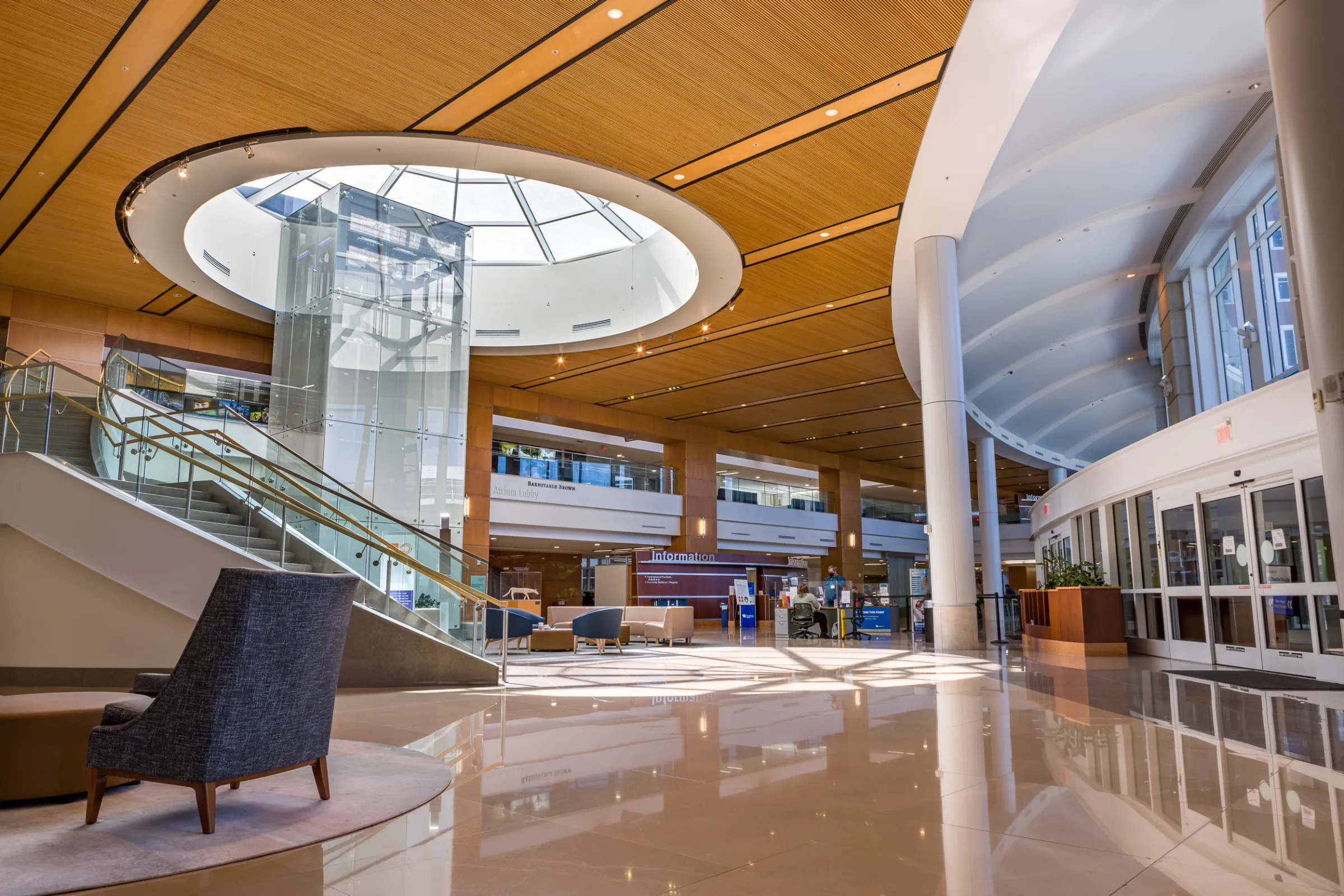
The Veterans Affairs (VA) Medical Center
The VA Medical Center and the UK Chandler Hospital are directly connected via walkway and function effectively as a single hospital from the perspective of both faculty and residents.
The VA Medical Center is a 200 bed acute care facility that includes intensive and progressive care units, as well as its own cardiac cath lab, EP lab, echocardiography and nuclear medicine suites, and cardiac MRI and cardiac CT labs. There are a variety of subspecialty clinics located at the main hospital site as well.
Cardiology fellows spend time at the VA in a variety of ways throughout their training. Each fellow has a biweekly continuity clinic at the VA medical center with their own patient panel. Additionally, fellows rotate through the VA cath lab and nuclear lab during their first two years. Upper-level fellows run the cardiology consult service for the hospital, where there is no primary cardiology team.
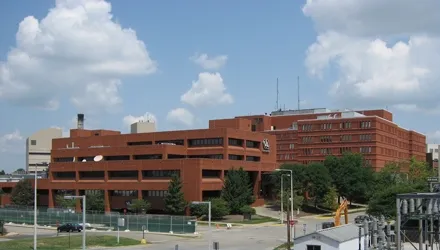
Good Samaritan Hospital
Good Samaritan Hospital is a 180-bed acute care facility located near downtown Lexington, less than a mile from UK Chandler Hospital. There are shuttles that run frequently between the two facilities as well as ample parking around each hospital.
Cardiology fellows most frequently go to Good Samaritan Hospital for their biweekly continuity clinic where they have their own patient panel. Fellows are able to spend elective time taking care of inpatients at the hospital, but the cardiology consult team is primarily staffed by APPs with oversight from UK cardiology faculty and is not part of the core rotation schedule. Additionally, the on-call fellow overnight does not cover Good Samaritan Hospital so that they are able to stay centrally located at the main medical center.
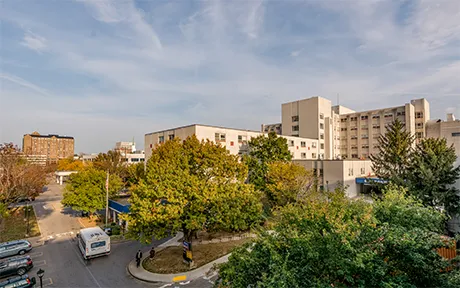
The Gill Heart and Vascular Institute
The Gill Heart and Vascular Institute is connected to the Albert B Chandler hospital and is the central hub of our state-of-the-art cardiac care facility. The Gill building houses outpatient specialty cardiac clinics, non-invasive echocardiography suites, facilities for stress testing, cardiac catheterization suites for inpatient and outpatient treatment, electrophysiology laboratories, a procedural recovery area, as well as an advanced cardiovascular imaging center.

Gill Cardiology Clinic
The clinic space within the Gill Heart and Vascular Institute is made up of a large central core for physicians with over 20 patient exam rooms. The clinic space is entirely dedicated to the cardiology division and multiple subspecialties rotate throughout the week including electrophysiology, device clinic, post-procedural care, advanced heart failure, post-transplant, LVAD, amyloidosis, CCU recovery clinic, pulmonary hypertension, adult congenital heart disease, sports cardiology, cardio-oncology, and women’s health.
Cardiology fellows are able to schedule their own clinic patients at the Gill center for needs outside of their usual biweekly clinic at Good Samaritan Hospital. Additionally, many of the fellows rotate through several of the subspecialty clinics, working closely with our faculty and other providers.
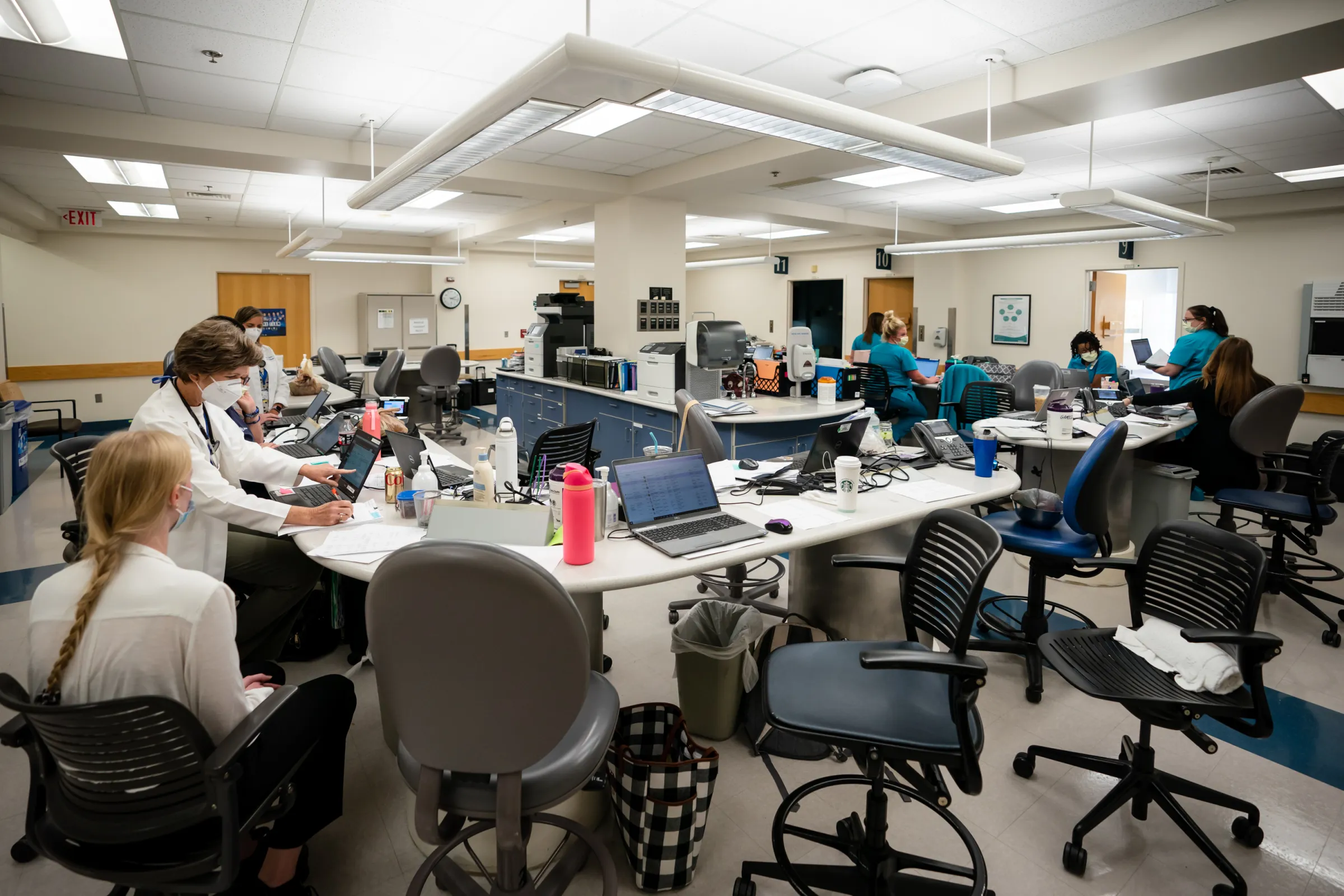
Cardiac Intensive Care Unit
Fellows will rotate through the CICU during their first and second years of fellowship. The 44-bed, dedicated cardiac intensive care unit is located with the Albert B Chandler hospital and is shared between cardiology and the cardiothoracic surgery teams. The CICU service is staffed with internal medicine residents and is a primarily fellow driven service. The cardiology team manages a large variety of patient presentations including STEMI, unstable valvular disease, and pre-LVAD and heart transplant patients. With the assistance of a large support group including 24-hour nursing, perfusionist, and pharacist support, the cardiology team lead by the fellow remains primary on a variety of mechanical circulatory support devices including aortic balloon pumps, Impella, RVAD, and VA ECMO. Overnight, the CICU is covered by the night float fellow.
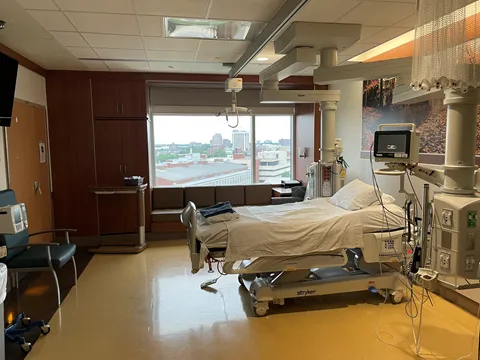
Catheterization Laboratory
Fellows will rotate through the UK cardiac catheterization lab during all three years of fellowship. Currently we have five cath labs open at UK that all run simultaneously as well as a dedicated EP lab. The rotation is set up with a junior fellow and senior fellow in the lab, allowing for close mentoring from senior fellows and attendings. Fellows have been able to comfortably achieve COCATS II numbers in cardiac cath, even during the COVID pandemic. Additionally, fellows will have the opportunity to work with our electrophysiology, congenital, and heart failure colleagues in the lab during their elective time.
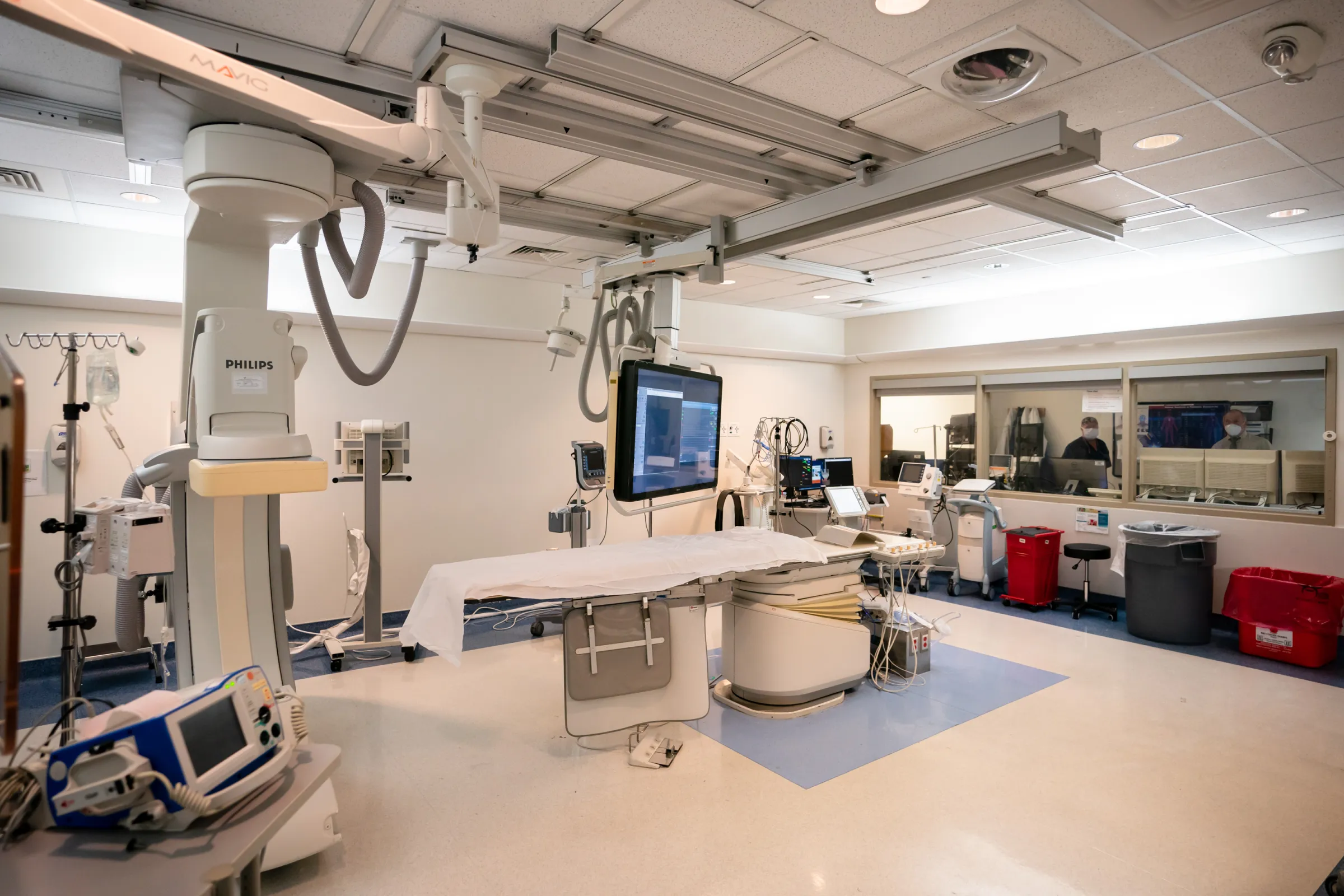

Advanced Cardiovascular Imaging Suites
Within the Gill Heart and Vascular Institute, the cardiology division oversees a variety of imaging modalities including cardiac CT on two Siemens dual-source scanners, cardiac MRI, and contemporary D-SPECT, SPECT/CT, and PET imaging. The majority of studies are read by our advanced imaging cardiology faculty, but frequently there is collaboration with our radiology department as well as pediatric cardiology regarding congenital cases.
Cardiology fellows have a nuclear/stress rotation each of their first two years as well as a CT/MRI rotation during their second year. Many fellows also spend additional elective time to get more exposure to different imaging modalities. Several recent graduates have been able to read a sufficient number of scans to sit for CT boards after their general fellowship.
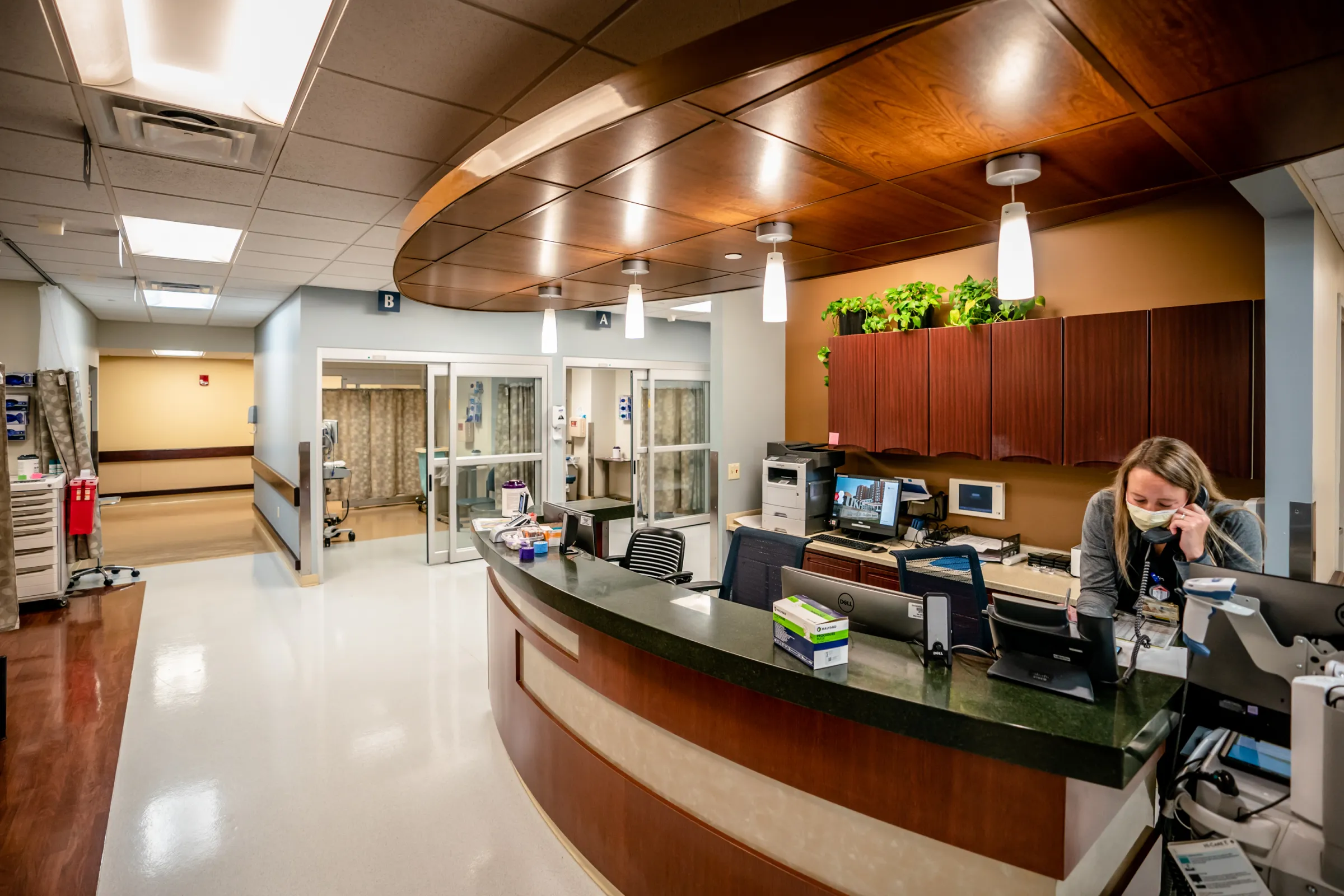
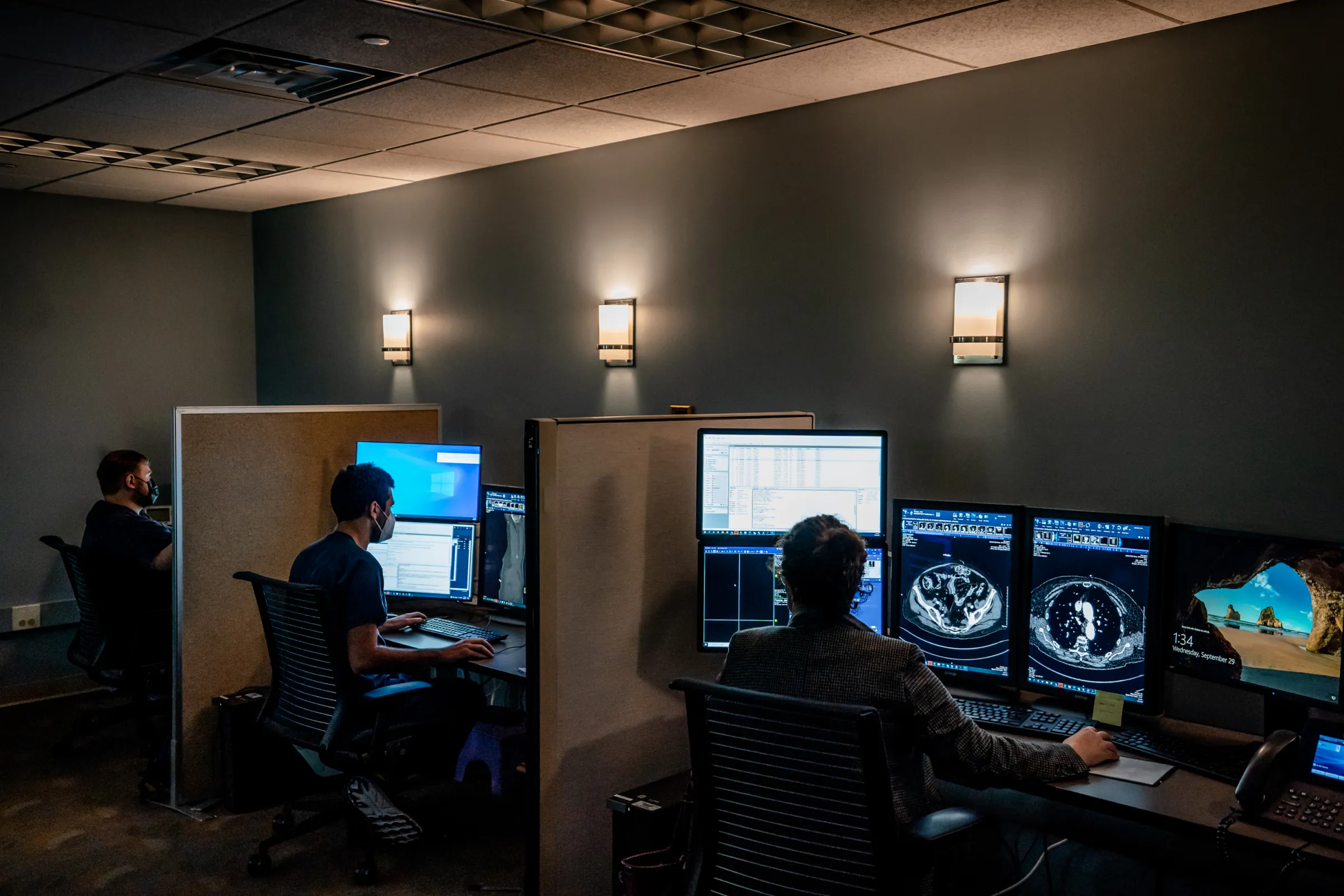
Echocardiography / Nuclear Reading Room
Located on the 1st floor of the Gill Heart and Vascular Institute, the reading room frequently serves as the central hub for fellow education throughout the workday. Fellows on echocardiography and nuclear rotations use the computer stations to review studies and format reports, which are reviewed in real-time with supervising attendings. Throughout the week, individual faculty members are designated as dedicated academic echo readers, which enables them to spend significant periods of time teaching and reviewing studies with fellows without the pressure to quickly read studies for the busy, high-volume echo lab. Stress labs are also located conveniently next door so that fellows can supervise and perform stress tests and TEEs throughout the day.


Cardiology Fellow Conference Room
The recently renovated conference room is located at the main UK medical center near the faculty and fellow office spaces, in the building adjacent to the Gill building. The room serves as the location for all of our regularly scheduled conferences, which are simultaneously broadcast over Zoom for fellows that are in other parts of the medical center or off-campus.
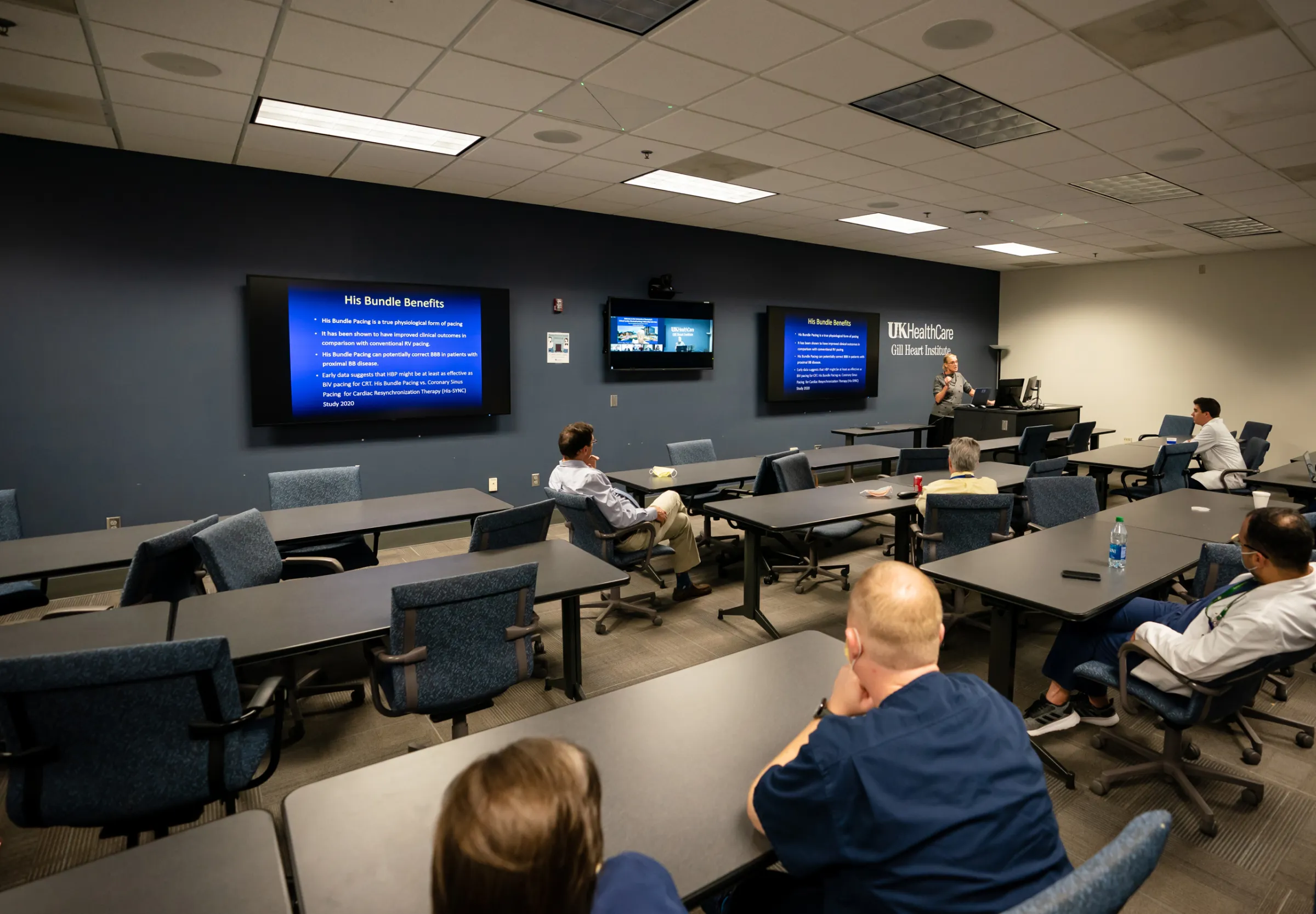
UK HealthCare Simulation Center
Our state-of-the-art 6,000 sq ft simulation center opened in 2018 and is located on the 2nd floor of the UK Chandler Hospital. The space is shared between all GME programs and houses a variety of simulators, mock patient rooms, and classrooms. The cardiology fellowship utilizes the space throughout the year for activities including hands-on tutorials for arterial access, temporary transvenous pacemakers, Swan-Ganz catheters, pericardiocentesis, and more. Though not pictured here, the cardiology fellows also have access to an advanced TEE simulator that is used throughout the year for additional training.
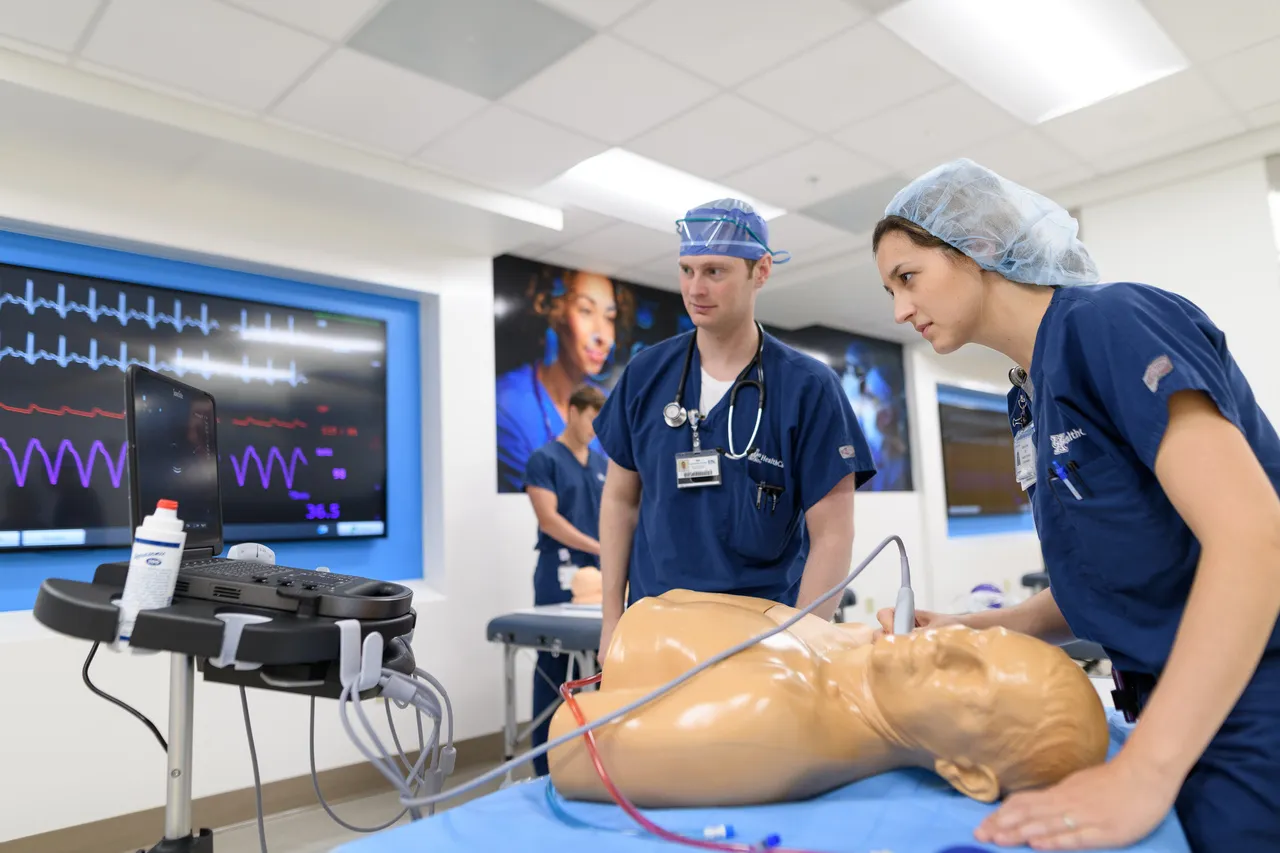
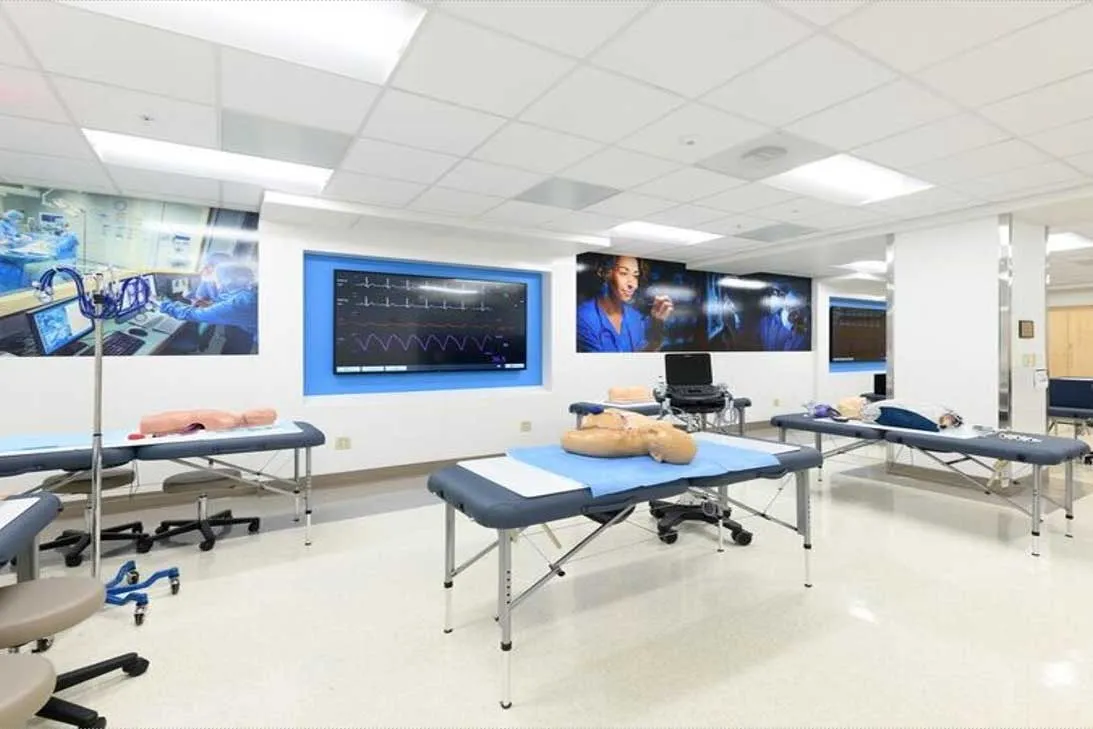
Cardiology Fellow Work Areas
Cardiology fellows have two dedicated, locked office spaces at the main UK medical center. One is located directly adjacent to the conference room and contains over 15 separate work stations with dual monitors that provide a place to review patient notes, read echocardiograms, and work on research during the day. A second work room is located on the ground floor of the Gill building near the CT/MRI suite, and also contains multiple computers. Both locations have storage, fridge space, and microwaves.
The GME office provides a separate overnight call room for the cardiology fellow with its own bathroom and shower. In addition, they have recently revamped a GME wellness room with furnished workout equipment.
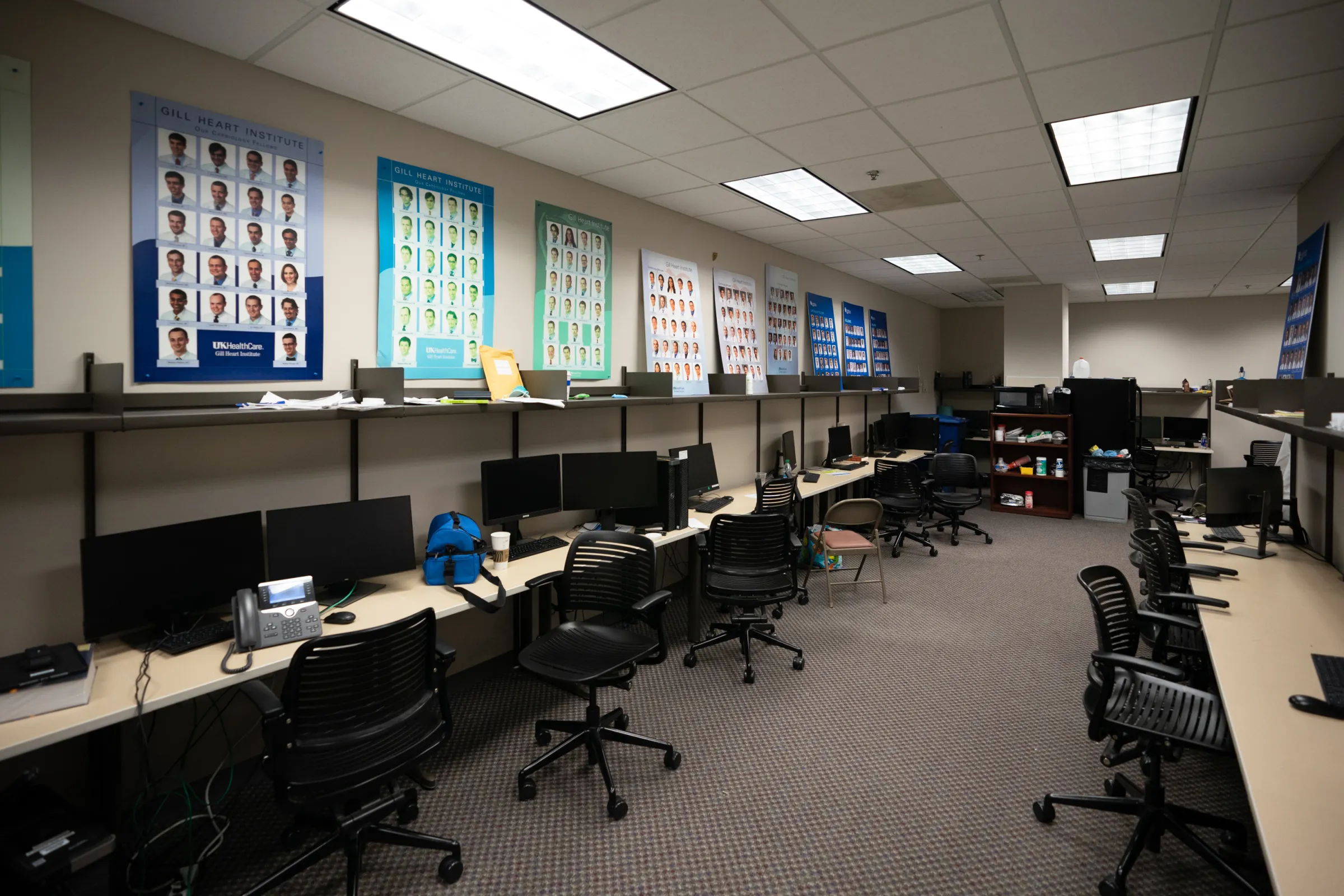
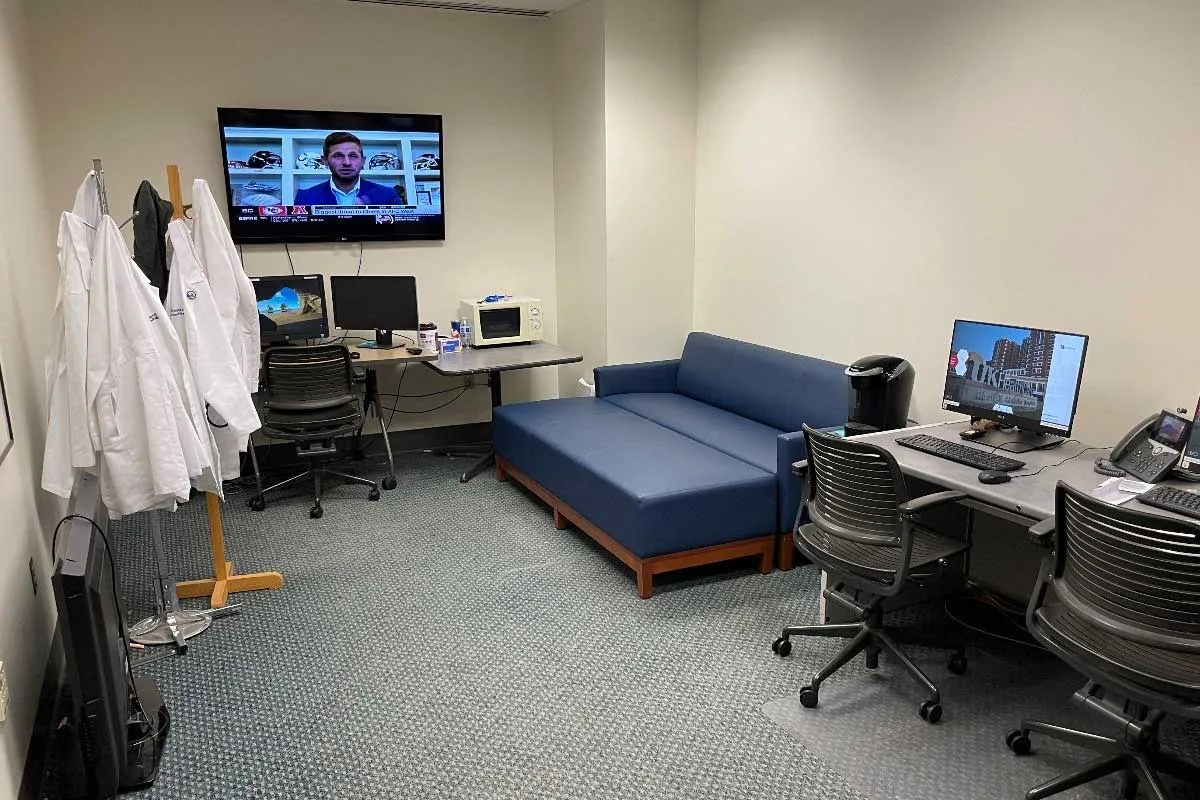
Dining
The main cafeteria at UK Chandler hospital was recently re-built and is open 24 hours daily with rotating specials and a variety of cuisines that alternate throughout the week. The Courtyard Cafe in the ground floor of Pavilion A offers coffee and small fares. Wild Cat Cafe is located at Kentucky Clinic near CT Wethington Building, where educational conferences are held. There are also multiple Starbucks stationed around the hospital, including a full Starbucks located in the Kentucky Clinic building just steps away from the cardiology fellows’ work room.
https://ukhealthcare.uky.edu/patients-visitors/visitors/food-lodging
